
Antique Singer sewing machines are prized among collectors and enthusiasts for their rich history, exceptional craftsmanship, and timeless designs. But where did it all begin?
Starting in 1851, the Singer Sewing Machine Company, founded by Isaac Merritt Singer, revolutionized the sewing field by bringing home-friendly machines to households worldwide.
Antique Singer machines have a unique charm that captivates collectors and history buffs alike. Beyond just nostalgically symbolizing a past era, they immortalize the ingenuity and skill of our 19th-century ancestors.
In this article, we’ll dive into everything that makes these beloved old Singer sewing machines so priceless! Additionally, we’ll dish out some tips and advice on how to gauge the price of your particular antique machine.
The History of the Singer Sewing Machine
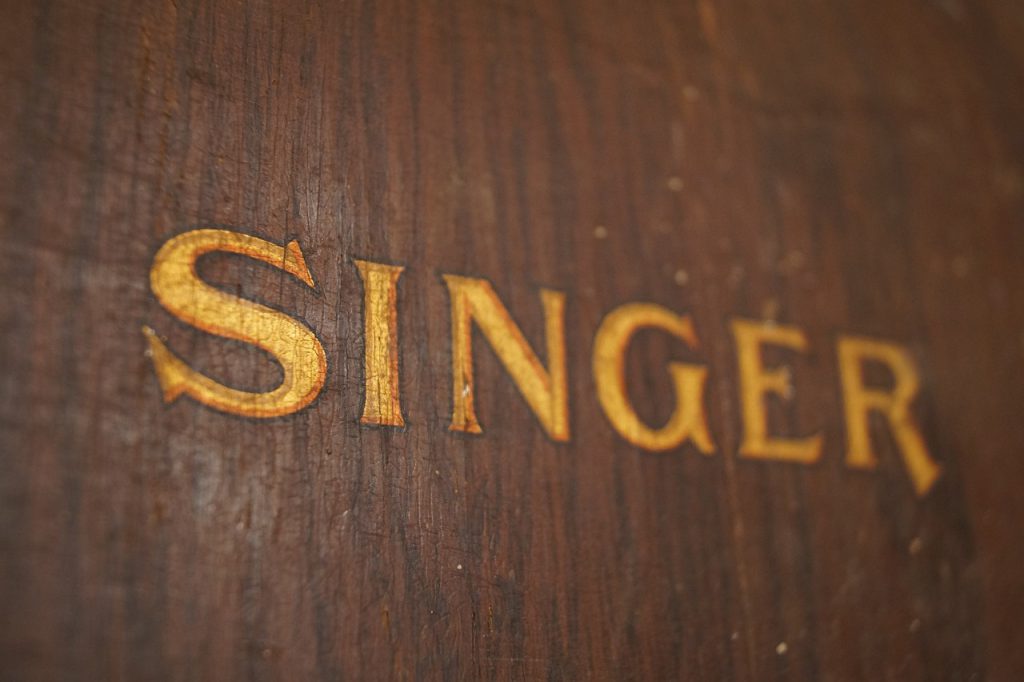
Isaac Merritt Singer transformed the sewing world in 1851 with his ingenious invention of the first practical sewing machine. His trailblazing device had convenient features, such as a foot-operated treadle, top-notch stitching ability, and an extended arm for larger items like garments and draperies. This breakthrough made sewing faster and easier, so Singer’s revolutionary machine didn’t take long to become a household hit globally.
Early Models and Innovations
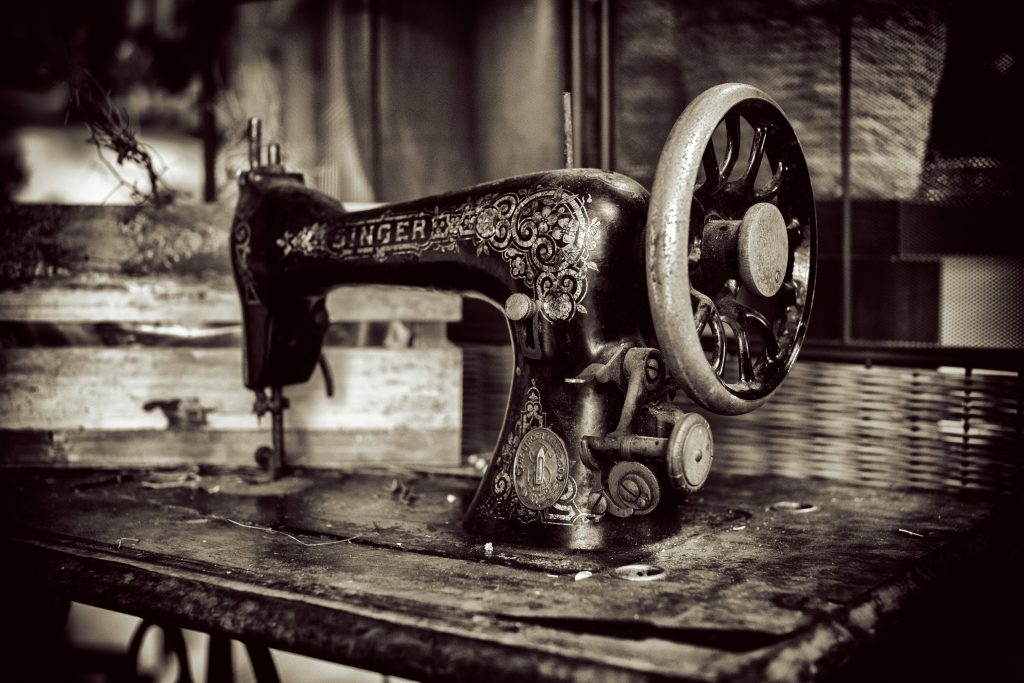
The initial Singer sewing machines were made of cast iron, hefty, and adorned with intricate designs. Some prominent early models encompass the following characteristics.
The Model 12 “New Family” sewing machine had a distinct appearance, reflective of the design trends during the mid-19th century. It was more compact and lightweight than its predecessors, making it suitable for home use. The machine’s body was cast iron, often featuring elaborate decorations with intricate patterns, including floral motifs and scrollwork.
The machine was typically black with gold detailing, highlighting the ornate embellishments. The cast iron base was commonly designed with a treadle mechanism for foot-powered operation. A hand crank could also be attached to the machine, offering an alternative method for powering the sewing process.
The Models 27 and 28 “Vibrating Shuttle” utilized a vibrating shuttle mechanism, which allowed for faster sewing compared to earlier models. The shuttle moved back and forth within a curved race, catching the top thread and forming a lockstitch with the bobbin thread. In addition, the machines were equipped with a vertical presser foot, facilitating the sewing of a wide range of fabrics.
Moreover, these models also featured a more extended arm than the Model 12 “New Family,” providing more space for sewing larger items. The tension system was adjustable, allowing users to control the stitch quality and maintain even stitches.
The Golden Age of Singer Sewing Machines
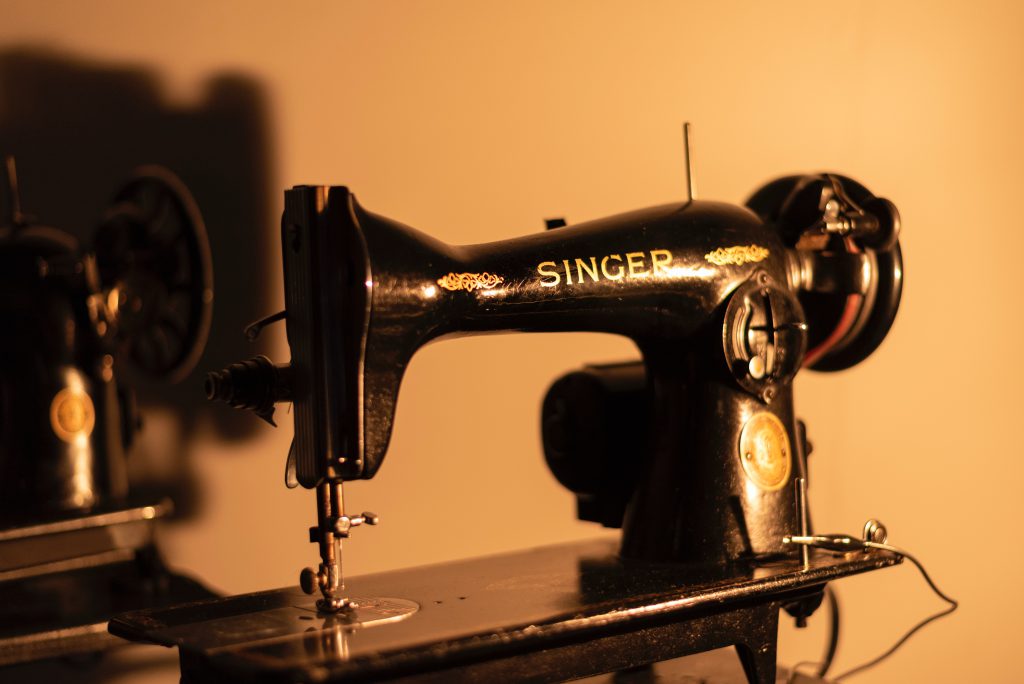
The early 20th century was a golden age for the Singer Sewing Machine Company. With the introduction of more affordable and portable models, such as the Singer Featherweight (Model 221) in 1933, sewing machines became a staple in homes worldwide.
The Singer Featherweight was typically black, adorned with gold decals accentuating the machine’s sleek and clean design. Unlike earlier cast iron models, the Featherweight’s body was made of aluminum, making it significantly lighter and easier to transport.
The machine weighed around 11 pounds, justifying its “Featherweight” name.
The machine’s compact shape featured a short, rounded arm and a small bed, ideal for sewing small to medium-sized projects. In addition, it came with a fold-up extension table that provided additional workspace when needed.
Identifying the Model and Serial Number
Let’s start figuring out the worth of your Singer sewing machine model!
It all begins with learning the machine model and serial number.
Locating the Serial Number
Depending on the model, the serial number could be located in a few different places, but here are the most common locations:
- On the front or back of the machine’s base or cabinet
- On the underside of the machine
- On the machine’s arm or pillar
Once you spot the serial number on your Singer sewing machine, which is usually a mixture of letters and numbers, write it down or snap a clear photo. That way, you’ll have a quick reference on hand.
Identifying the Model Number
Unlike the serial number, the model number was not always written on antique Singer sewing machines. However, you can often identify the model by examining the machine’s physical characteristics and features.
Familiarize yourself with standard Singer models, such as the ones we already mentioned (Model 12 “New Family,” Model 27 and 28 “Vibrating Shuttle,” and the Singer Featherweight (Model 221)) as well as their unique attributes.
The model number may sometimes be stamped or embossed on a metal plate affixed to the machine.
Here are a few tips to help you identify the model number:
Examine the machine’s shape and design, particularly the base and the arm. For example, Singer Model 12 “New Family” is characterized by compact size and cast iron construction. The base features a foot-powered treadle mechanism, and the arm is relatively short and slender.
Look for distinguishing features, such as the type of shuttle mechanism, bobbin system, or stitch capabilities. For example, Singer Models 27 and 28, “Vibrating Shuttle,” have a boat-shaped and slightly curved shuttle. Both models primarily perform straight stitch sewing and share similar tension and presser foot systems.
Research the machine’s decals and decorative motifs, as some Singer models have specific design patterns unique to their production era. The Featherweight has a more streamlined and modern design than earlier Singer models. The decals on the Featherweight are simpler and cleaner, often featuring parallel lines, geometric shapes, or a subtle “Celtic Knot” pattern.
Dating the Antique Singer Sewing Machine
If you’ve got the serial and model numbers for your antique Singer sewing machine, you can quickly figure out when it was made! All you need to do is head to the official Singer Sewing Company website. There’s a searchable database with almost all the serial and model numbers, plus their corresponding production dates.
By typing in that serial number or looking it up on the list, you’ll instantly know the year and location of your machine’s production. Not only can you figure out how old your Singer sewing machine is, but you also learn something about its historical background. Pretty cool, right?
Assess the Condition
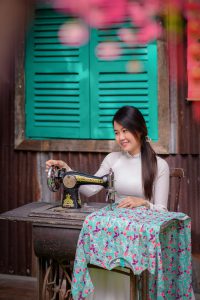
Assessing the condition of your antique sewing machine is another crucial step in determining the price of the Singer sewing machine. Here’s what you need to do.
Inspecting the Exterior
Look at the machine’s paint job and decals for any fading, chipping, or signs of deterioration. Naturally, some wear and tear will occur over time, but too much damage could diminish the value. Also, ensure you assess the decals’ clarity and vibrancy. Machines with well-preserved designs are usually much sought after!
Check out the cast iron body and all the other metal components for any rust, corrosion, and wear and tear. Inspect if there are any cracks or repairs. They could reduce its structural integrity and devalue it!
If the machine comes with a wooden cabinet or case, check it to make sure there are no signs of wear and tear, like scrapes, dents, or watermarks. Check for any telltale signs of woodworm or termites, as they could eat its structural elements.
Lastly, ensure the hinges, locks, and handles all work correctly.
Check out any fancy extras, like gold leafing or intricate scrollwork, for signs of wear and tear. On the other hand, a pristine decorative design can jazz up the machine’s overall look and increase its worth. So make sure to give them scrutiny!
Evaluating Mechanical Functionality
Check all the major components, like the handwheel, needle bar, presser foot, and shuttle mechanism. Make sure they’re running smoothly and without any grinding or sticking. Pay close attention to whether there’s anything out of the ordinary – it may indicate that you need to do some lubricating or repair work soon.
Check out the tensioner on the machine. Can it produce even, consistent stitches? Any uneven stitches or trouble adjusting the tension could signal that you need to repair the machine.
Give that electric sewing machine the once-over and make sure its motor, wiring, and foot controller are all in tip-top condition – no wear ‘n’ tear allowed! Then, fire it up to check if it runs smoothly. It shouldn’t get too hot or make any weird noises, either.
Have you got your eye on a second-hand sewing machine? Double-check that all the nifty accessories and attachments, like bobbins, needles, and presser feet, are included in the package to juice up its value and performance. They must be in working order and compatible with your machine, so before you part with those hard-earned dollars, take a look!
Search for tell-tale signs that the machine has been cared for, looked after, regularly cleaned, and oiled. The buildup of dust, dirt, and grimy old oil can take its toll on a machine’s performance. So, if it’s been looked after, it’ll likely operate more smoothly and command a higher value.
Research the Market
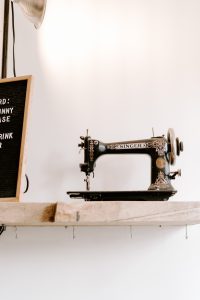
To get a sense of the current market value for your Singer sewing machine, conduct some research on recently sold or currently listed machines that are similar to yours.
eBay is a popular online marketplace for buying and selling antique Singer sewing machines. Start by typing your machine’s model into the search bar. With the help of filters like condition and location, narrow down the results to find exactly what you’re looking for. Peek at each listing closely and pay attention to their condition and shipping costs so you can see which one benefits your wallet or purse more. You’re sure to stitch together a great purchase in no time!
Etsy is another online platform where you can find antique Singer sewing machines. Just like you would on eBay, search for the specific model and apply filters. Then, as always, make sure to check out all the details: condition of the machine and extra accessories included, plus shipping costs. To better understand its worth, look at some comparable models and see their listing prices.
Gather intel on the market value of your old Singer sewing machine by scoping out sold listings on eBay and Etsy. Not only will you find out the actual prices that buyers have shelled out for machines similar to yours, but it’ll also help you understand what kind of demand there is right now.
For instance, a 1907 Singer Model 28 typically sells for about $300, while a rare “Red S” Singer Featherweight machine in good condition usually goes over $2,000. However, everything we’ve discussed so far can affect these prices.
This is why you should try to spot trends in the sold prices. Simply compare them with those current listings asking for a price.
Consider Additional Factors
While comparing prices on eBay and Etsy, consider additional factors that may impact the value of antique Singer sewing machines.
- The reputation of the seller
Buyers may be willing to pay a premium for a machine from a reputable seller with a proven track record of positive feedback and satisfied customers.
- The listing quality
Clear, detailed photos and accurate descriptions can significantly influence a buyer’s perception of the machine’s value.
- Timing
Antique Singer sewing machines’ value may fluctuate based on market trends or seasonal demand. Monitor these trends to identify the best time to buy or sell a machine.
- Shipping and handling
Shipping costs, especially for heavy items like sewing machines, can impact the overall cost of a transaction. Consider the shipping fees when comparing prices, and be aware that local pickup options may appeal to buyers looking to save on shipping.
- Customizations and restorations
Machines professionally restored or customized with modern features (such as LED lights or updated electrical components) may command a higher price. However, purist collectors might prefer machines that have been preserved in their original state.
Consult an Expert
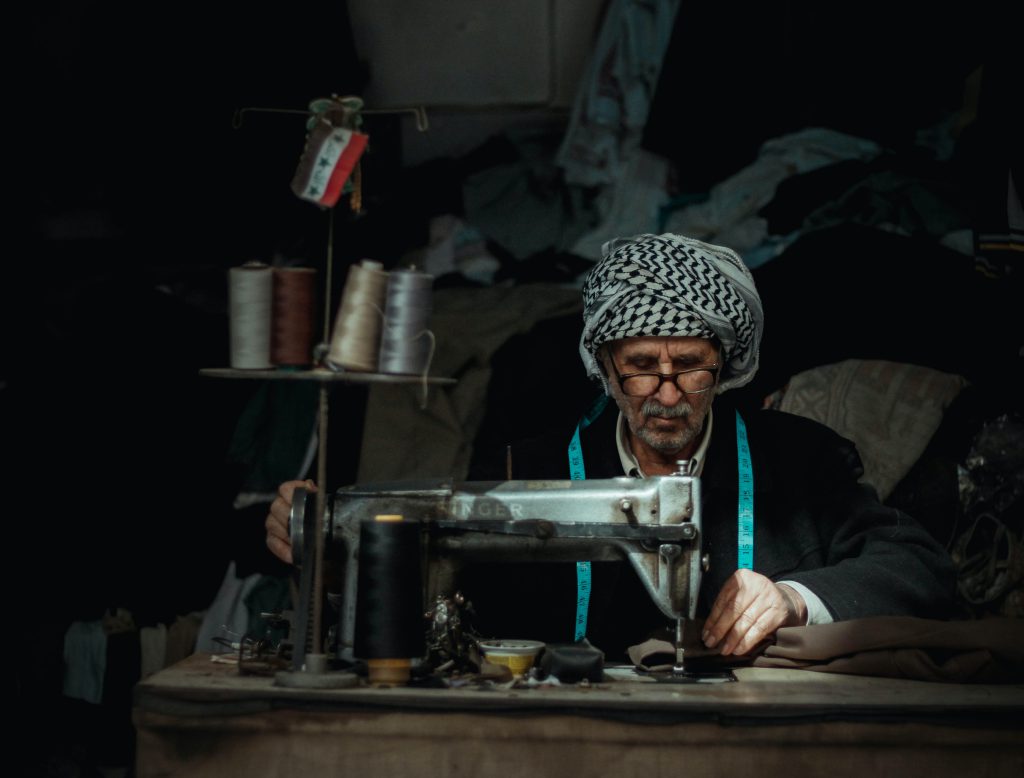
Are you still unsure if your vintage Singer is worth anything? Then, it’s time to get an expert opinion! Antique appraisers, sewing machine dealers, and collectors can give you great advice and clue you in on any unique features that might mean extra bucks.
Document Your Findings
Documenting your discoveries is necessary, so don’t forget to take notes. Don’t let the incredible finds slip away – capture them in writing!
As you seek knowledge about your old-school sewing machine, note every detail. Write down the model number, serial number, overall state, and any standout features.
Get a read on market trends and jot that down, too. It might come in handy if you choose to sell off your piece! Having a written record of all the info will make it easier to close a better deal and be super helpful for prospective collectors down the line.
Conclusion
Determining the value of an antique Singer sewing machine can be a highly engaging (and potentially lucrative!) project. However, by considering all the steps mentioned above, you can confidently assess your vintage model.
Whether you keep it as a precious family heirloom or peddle it off to another enthusiast, understanding its worth can help ensure that its historical importance and money-making potential are genuinely appreciated!

Leave a Reply